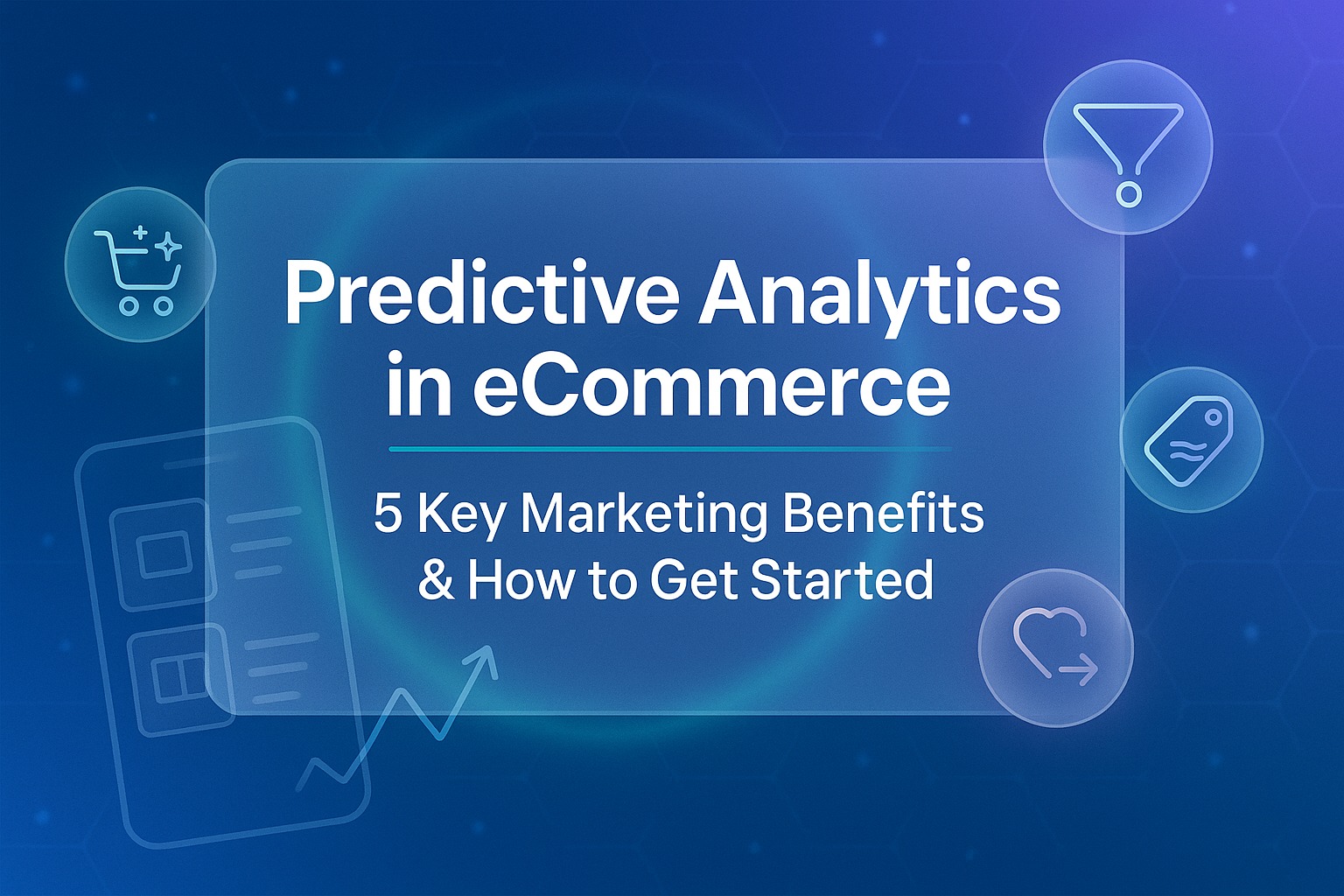Blog
Predictive Analytics in eCommerce: 5 Key Marketing Benefits & How to Get Started

Predictive analytics is transforming the eCommerce landscape by empowering businesses to make data-driven decisions that enhance marketing strategies. Leveraging predictive analytics in eCommerce not only boosts customer engagement but also drives sales and optimizes inventory management. In this comprehensive guide, we will explore the five key marketing benefits of predictive analytics and offer actionable steps to get started on your predictive analytics journey.
Understanding Predictive Analytics in eCommerce
Predictive analytics refers to the use of statistical algorithms and machine learning techniques to identify future outcomes based on historical data. In the world of eCommerce, it can significantly influence marketing campaigns, customer behavior predictions, and sales forecasts.
Why Predictive Analytics Matters for Your ECommerce Business
In an increasingly competitive online marketplace, understanding customer behavior is vital. Predictive analytics equips eCommerce businesses with the tools to anticipate customer needs, thus enabling proactive marketing strategies. By implementing predictive analytics, you can:
- Enhance customer experience
- Increase conversion rates
- Optimize inventory and supply chain management
- Reduce churn rates
- Personalize marketing efforts
5 Key Marketing Benefits of Predictive Analytics
1. Improved Customer Segmentation
One of the biggest advantages of predictive analytics is its capability to refine customer segmentation. By analyzing historical data, businesses can categorize customers into distinct groups based on purchasing behavior, demographics, and engagement levels.
Benefits of Improved Segmentation:
- Targeted marketing campaigns
- Enhanced customer satisfaction
- Better allocation of marketing resources
2. Personalized Marketing Campaigns
With insights derived from predictive analytics, eCommerce businesses can create personalized marketing campaigns tailored to individual customer preferences. This approach increases engagement rates and improves customer loyalty.
Strategies for Personalization:
- Personalized email recommendations
- Tailored product suggestions on the website
- Exclusive offers based on past purchases
3. Enhanced Demand Forecasting
Predictive analytics helps businesses anticipate product demand, allowing for better inventory management. By accurately forecasting demand, eCommerce platforms can minimize stockouts and reduce excess inventory.
Demand Forecasting Techniques:
- Analyzing seasonality trends
- Monitoring customer purchasing cycles
- Incorporating external factors (e.g., market trends)
4. Customer Retention and Churn Prevention
By leveraging predictive analytics, businesses can identify churn patterns and take preemptive measures to retain valuable customers. This involves analyzing customer interactions and engagement levels to spot indicators that may lead to churn.
Churn Prevention Strategies:
- Implementing personalized retention campaigns
- Conducting targeted surveys
- Offering loyalty rewards to at-risk customers
5. Increased ROI on Marketing Spend
Predictive analytics can significantly enhance the return on investment (ROI) on marketing expenditures. By optimizing campaigns based on data-driven insights, businesses can ensure they are investing in the most effective marketing strategies.
Maximizing ROI Tactics:
- A/B testing for campaign effectiveness
- Identifying high-performing channels
- Regularly updating customer data for accuracy
How to Get Started with Predictive Analytics
Implementing predictive analytics in your eCommerce strategy might seem daunting, but by following these steps, you can integrate this powerful tool successfully.
1. Define Clear Objectives
Start by identifying specific business goals you wish to achieve through predictive analytics. This could range from improving customer retention to optimizing inventory management.
2. Invest in the Right Tools
Select predictive analytics tools and software that align with your objectives. Popular options include:
- Tableau: For data visualization
- Google Analytics: For website insights
- IBM Watson: For advanced analytics solutions
3. Gather and Clean Your Data
Ensure you have access to relevant data. This includes customer purchase histories, website interactions, and demographic information. Proper data cleaning is crucial for accurate analytics.
4. Analyze and Interpret Data
Once you have your data, use predictive analytics tools to analyze trends and patterns. Focus on creating actionable interpretations that can guide your marketing strategies.
5. Test and Iterate
Predictive analytics is an ongoing process. Regularly assess the effectiveness of your strategies and make adjustments based on the data insights. This iterative approach allows for continuous improvement.
Frequently Asked Questions (FAQs)
What is predictive analytics in eCommerce?
Predictive analytics is the use of data, statistical algorithms, and machine learning techniques to determine future outcomes based on historical data.
How can predictive analytics enhance customer experience?
By analyzing customer data, businesses can tailor their marketing campaigns, offer personalized recommendations, and anticipate customer needs, thereby enhancing the overall shopping experience.
Are there any risks associated with predictive analytics?
While the benefits are substantial, risks include overreliance on data, potential privacy issues, and the need for quality data. It’s essential to approach predictive analytics with a balanced perspective.
Conclusion
In summary, predictive analytics is a game-changer for eCommerce businesses looking to enhance their marketing effectiveness. By understanding and implementing its benefits, organizations can improve customer segmentation, personalize marketing campaigns, enhance demand forecasting, boost customer retention, and maximize ROI.
For more valuable insights into digital marketing and eCommerce strategies, explore Theme Bazar for tools and resources that can help elevate your business. By embracing predictive analytics today, you position your eCommerce venture for long-term success and growth.

